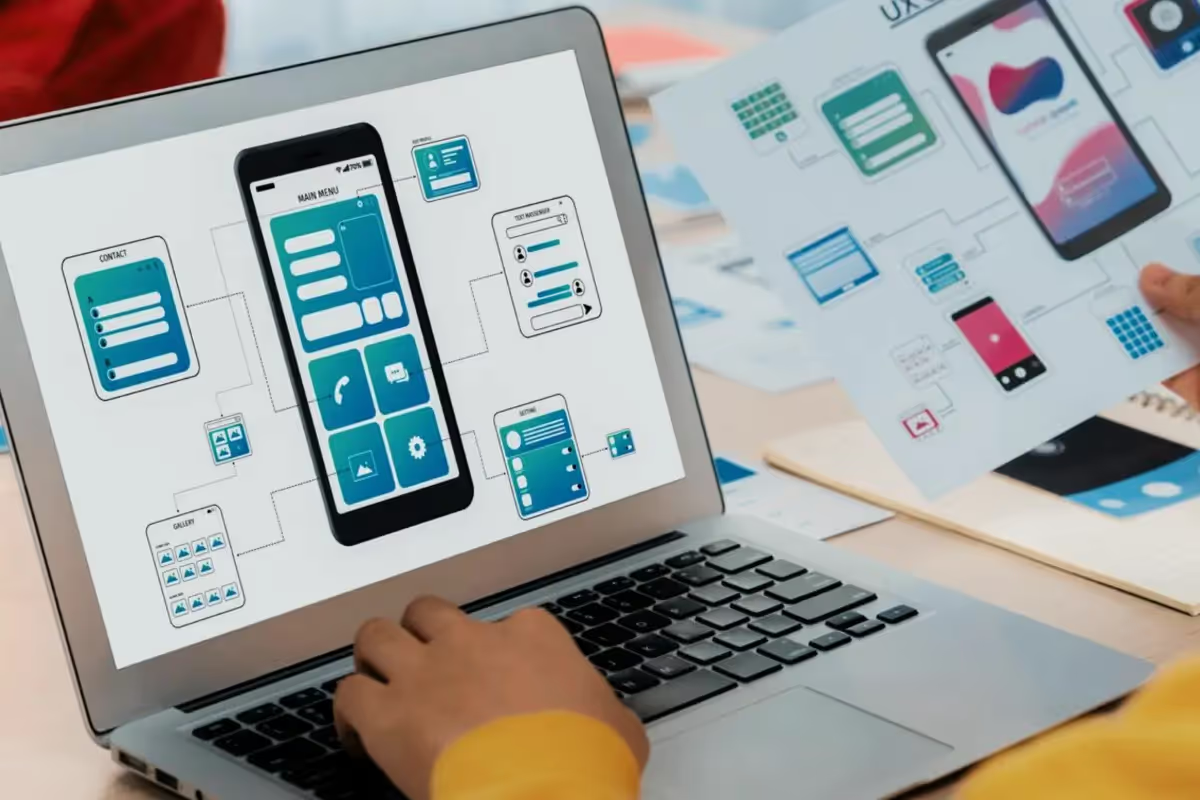Healthcare customer relationship management (CRM) software surged in demand in the past several years. The world, gripped by the pandemic, has largely contributed to the digitalization of the medical field and the integration of associated patient-care services. Medical institutions and startups seek healthcare CRM development to offer their patients affordable, comprehensive, and convenient services.
The future for healthcare CRM is promising, considering it’s predicted to hit USD 12.5 billion by 2025. With emerging AI technologies and maturing cloud services, healthcare CRM software will benefit private practitioners, small clinics, and hospitals in many ways. Hence, it’s natural for medical tech founders to seek a slice of this lucrative pie.
However, healthcare CRM app development isn’t as straightforward as it seems. Besides working on healthcare features such as appointment schedulers, practitioner referrals, and billings, the CRM must consider patient privacy and HIPAA compliance regulations.
We have experience developing healthcare software of different complexities and with different features, and in this guide, I’ll share with you Uptech’s expertise in medical CRM software development. I’ll give you the finer details of how to develop healthcare CRM software that adds value to your users, how much money it takes to build one, and what features are a must-have.
Healthcare CRM Development: The Basics
When developing healthcare CRM, we match the business requirements of medical practitioners with relevant software technologies and practices. In simpler words, we understand your business needs and tailor a CRM healthcare software that helps you deliver exceptional patient experience.
Still, it’s proper to define a healthcare CRM because there are distinctions that separate it from other business CRMs.
What is healthcare CRM software?
Healthcare CRM software, or medical CRM, is a digital solution allowing medical practitioners to provide a better patient experience via integrated and automated features. Medical CRM software combines different facets of healthcare management, including:
- patient care;
- e-prescription;
- personalized outreach;
- staff duty rosters;
- patient medical histories.

3 types of healthcare CRM software
Generally, you’ll find most CRM software falls under these categories.
- Analytical CRM allows medical practitioners to gain valuable insights from treatment records, patient journeys, and other data collected over time.
- Collaborative CRM promotes inter-departmental information flow and ensures hospitals communicate efficiently with patients, vendors, partners, and customers.
- Operational CRM aims to lighten the burden of doctors, nurses, and healthcare staff.

Healthcare Software Market Overview
When securing investment for CRM software, it’s great to boost the funder’s confidence with facts and figures. These are interesting numbers associated with the healthcare software industry or medical CRM in particular.
- IoT is growing exponentially in the healthcare industry, with worldwide revenue predicted to hit $135 billion by 2025.
- AI usage in healthcare solutions will potentially save medical providers’ costs by up to $150 billion annually in 2025.
- The healthcare CRM market in the US worthed USD 14.3 billion in 2021. The value is predicted to grow at a CAGR of 8.4% from 2022 to 2030.
- North America remained the largest market for medical CRM in 2021.
- Cloud is the preferred deployment mode for healthcare CRM in 2020, followed by on-premise and hybrid. The trend is expected to remain the same by 2030.
- According to Deloitte’s research, 43.5% of all US Medicare consultations were conducted online. This number dwarfs the 0.1% recorded before the pandemic.

Why Is There a Need For Healthcare CRM Software?
Operating a private practice or a large treatment center may differ in workflow, but both present their own challenges. By developing CRM software tailored to specific healthcare needs, your users enjoy these benefits.
Simplify patient data management
Fundamentally, a medical CRM streamlines patient scheduling, medical histories, and other personal details. Cloud technologies and HIPAA-compliant software enable a centralized approach to moving patient data securely. This allows patients to benefit from telehealth services, make appointments online, and avoid long queues in treatment centers.
Provide seamless patient experience
While these are the hallmark of a good patient care lifecycle, developing your own healthcare CRM software also enables personalization. The software incorporates data analytics capabilities, which allow clinics to customize messages and recommendations for different groups of patients.
Streamline patient records management
Well-managed patient records are essential to ensure they receive proper medical consultation, treatment, and follow-ups. Rather than storing them in fragmented databases, healthcare CRM software consolidates them into a single system. Large medical institutions can gain real-time access to updated patient records across departments.
Reduce operational costs
Medical institutions are for-profit organizations, and it’s important to keep operation costs low. According to the Council of Affordable Quality Healthcare, operational costs in the US healthcare system soared to $60 billion in 2022. Modern medical CRM consists of time-saving features that minimize unnecessary expenses and human errors.

5 Steps to Healthcare CRM Development
Whether you’re developing a CRM for hospitals or a group of private practitioners, you’ll need a solid plan. Here’s how to get started.

Step 1. Choose a healthcare CRM development partner
As a medical startup founder, you’ll need your eyes on other areas of your business. Hence, it’s better to work with a proven CRM software developer. Working with a team of seasoned developers allows you to reduce the time to market and, often, at a lower cost.
For example, many founders outsource their CRM software development to companies like Uptech. Our developers, designers, and QAs help to build profitable products with product market fit and fast scale-up teams for technology startups in healthcare. Our customer-centric approach to app development and industry know-how results in our client’s remarkable growth and our long-term partnership.
If you’re looking for a development team to help you deliver top-quality apps at an affordable price, contact us.
Step 2. Ensure they have the right talents
Healthcare CRM software development is considerably more challenging than some business apps. You cannot accomplish this task with one or a handful of software engineers. To build healthcare CRM, you’ll need a team of expert developers proficient in their respective disciplines.
For example:
- Backend developers build and deploy the underlying business logic and databases on distributed cloud or on-premise servers.
- Front-end developers create functional apps for patients, doctors, and staff.
- UI/UX designers deliver impeccable user experience through well-designed layouts and controls.
- QA engineers prevent major bugs from slipping into production releases.
- Project managers coordinate the entire effort of the medical CRM development team.
- Business analysts capture and translate your requirements into software specifications.
Uptech is one of the few healthcare software development companies that provide a full-cycle healthcare app development services. We design & develop healthcare software for doctors, hospitals, labs, medical companies, and healthcare startups. Our clients say that we work fast, come up with innovative ideas, and build great and quality apps.
Step 3. Discuss business requirements
A good software development team will consult and discuss with you to get the business requirements right. During this process, they will take you through several steps to ensure the final deliverable aligns with the picture in your mind. This includes.
- Drawing up project goals, specifically the purpose of the healthcare CRM. For example, software capable of suggesting recommendations or an operational CRM with user-friendly automation features.
- A discovery stage, where the product team undertakes user research, prototype, and validates tech feasibility to create a user-friendly product with the right market fit.
- Designers and product managers conduct interviews and surveys with probable users to validate the software features and hypotheses.
- Then, they decide which features are immediate priorities and focus on them when building the minimum viable product (MVP). They might analyze your existing CRM software to shorten development time and choose the right tech stacks.
- App developers make an audit of the existing healthcare software if you have one or conduct tech research if you’re creating an app from scratch. It all is done to optimize the development time&costs, and pick the best tech stack for your project.
Step 4. Kickstart design and development
With the features and specs documented, the CRM development team starts working on building the layout, framework, data storage, and backend with the appropriate tech stacks. For healthcare apps, UI/UX design is as important as the code, APIs, and other microservices powering the app.
A good UI/UX approach ensures that doctors, patients, and other users can use the app intuitively. To do that, the designers do the following:
- They map the entire user journey and associate each interaction point with well-designed UI elements, such as menus, typography, and app layouts.
- UX designers reduce the number of steps it takes to perform a specific action on the app.
- They use easily-understandable instructions to onboard and help users get started with the app.
To build a robust CRM, developers use trusted 3rd parties, encrypt users’ data, and resolve bugs and glitches during the development stages. This results in a user-friendly, secure, and functional CRM app for your clients.
Tech stack for healthcare CRM development we use
We build scalable and performant web applications using the following tech stack:
Web frontend tech stack:
- JavaScript
- HTML5
- CSS3
- TypeScript
- React + Redux / MobX
- Next.js
- Storybook
- Jest
- Cypress
Backend teck stack:
- Node.js
- Typescript
- Nest.js/Express.js
For more detailed picture of the technolgies we use and services we offer, visit our Service page.
Step 5. Test, deploy & support
To ensure the CRM is stable, developers test the software several times and at different stages. They also included user feedback and made necessary changes before deploying the CRM. Once deployed, you’ll need ongoing solid support from the development team to iron out teething issues and make subsequent improvements.
Core Features of CRM Healthcare Software
These features are essential for functional medical CRM software.
Customer data management
Medical staff stores, updates, and consolidates customer patient data with two databases.
- A secured, centralized patient database records medical histories, insurance, prescribed treatment, and contact information. Data is also stored on Electronic Medical Records (EMR), which can be integrated with various hospital CRM systems. For example, Salesforce Health Cloud stores and secures all patient data on cloud servers.
- A template database for storing pre-designed forms. This allows patients to fill up the necessary forms immediately from their medical apps.
Call automation
Call automation, which directs incoming patient calls to the right department. Some medical CRM may include conversational AI that collects and passes the patient’s inquiry to the support personnel. For example, cloud-based HIPAA CRM supports voice call automation and scheduling.
Support
CRM healthcare software also collects patient feedback to help medical staff continuously improve their service. Support feature is a must here as your clients can be in touch with you 24/7 and provide you with valuable insights.
Task management
Task management features allow doctors, nurses, and medical staff to work and collaborate more efficiently. For example:
- They use a CRM dashboard to easily manage and view patient appointments, prescriptions, and internal workflows. For example, Zendesk allows healthcare staff to document the patient’s journey on the dashboard.
- A calendar scheduling feature allows patients to book, reschedule or cancel an appointment on the go.
- Automated reminders ensure patients don’t miss their appointments and keep doctors alert of upcoming schedules. OperaDDS, a dentist CRM, provides several ways to remind patients, including voice reminders, emails, and postcards.
- A performance monitoring module helps track key performance indicators (KPI) for specific medical services or departments.
Reporting and analytics
These tools enable healthcare management to take a data-driven approach to strategize and improve existing workflows.
- Custom report generation tools for creating reports with specific metrics. For example, you can generate reports for patient counts according to symptoms or the average treatment time.
- Analytics tools that derive valuable insights from data generated at various patient touchpoints. For example, Meditab turns complex healthcare data into easily-understandable formats with graphs, tables, and charts.

Additional Features
Medical institutions use these features to bolster patient outreach and marketing efforts.
- The CRM analyzes patient data, including behavioral, transactional, and demographics, to provide a personalized customer journey. For example, Mercury Health uses data science and analytics for such purposes.
- Healthcare CRM strengthens marketing efforts with auto-emailing, SMS, and loyalty programs. PatientPop is one such CRM with good email automation.
Healthcare CRM Development: Uptech Experience
Uptech’s success in creating functional, engaging, and well-received apps includes the competitive healthcare space. Here, we highlight our experience building a mental health mobile app that enables users to engage with therapists in 5-minute calls. This app also serves as a learning platform, providing a series of lectures to users.

Our client approached us with a clear goal of entering and acquiring a piece of the healthcare market share. To do that, we started by running the Discovery process, where our Product Manager conducted interviews with the target audience. We wanted to understand their pain points and ensure the app delivers a strong value proposition.
One of the app’s distinctive features is the 5-minute calls. While it seems straightforward, we had to consider how to ensure smooth audio quality and provide a hassle-free call experience to users. To do that, we added the timers and question lists on the screen in a non-distractive manner. We also integrated the Sendbird messenger with the app to provide a well-rounded experience.
Despite starting with an MVP, we took note of our client's intent on growing the user base. Therefore, we built a scalable backend that fits our client’s future growth plan. Besides key features like in-app calls, messengers, and learning, our team created a user-friendly admin panel for the mental healthcare app.
Conclusion
Healthcare CRM will continue to reshape the medical industry in good ways. We’ve explained what CRM is in healthcare and its key features to support doctors, nurses, and medical staff. More importantly, we showed how to develop CRM software for healthcare in our team's exact steps.
Talk to us to learn more about building your own CRM healthcare software.




































































































